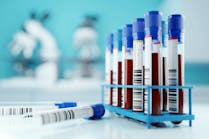UV radiation damage leads to ribosome roadblocks, causing early skin cell death
In a recent study, researchers at Johns Hopkins Medicine suggest the cell’s messenger RNA (mRNA) — the major translator and regulator of genetic material — along with a critical protein called ZAK, spur the cell’s initial response to UV radiation damage and play a critical role in whether the cell lives or dies.
While UV radiation has long been known to damage DNA, it also damages mRNA, and the latest findings, published June 5 in Cell, indicate that mRNAs act as first responders in telling the cells how to manage the stress.
The findings indicate that ZAK senses the extent of cellular damage and responds depending on how much UV radiation the cell receives, offering a more nuanced understanding of UV-caused cell death and identifying new ways to keep ZAK’s activity under control, says Rachel Green, Ph.D.
The research also “very clearly shows” that, for example, a skin cell’s fate in the immediate aftermath of UV radiation is “driven primarily by the extent of colliding ribosomes and ZAK signaling,” Green says.
“In this regime, DNA damage and the well-characterized DNA damage response pathway, including the key protein p53, do not significantly determine cell fate decisions,” she says.
DNA damage repair is critical and occurs in a subset of cells that are copying their genetic material, but these pathways are not the major “deciders” of cell fate, she says.
Green co-led the research with Sergi Regot, Ph.D., associate professor of molecular biology and genetics at the Johns Hopkins University School of Medicine, and Alban Ordureau, Ph.D., assistant member of the Cell Biology Program at Memorial Sloan Kettering Cancer Center’s Sloan Kettering Institute and an assistant professor at Weill Cornell.
To conduct their research, the scientists exposed human cellular models to a UV lamp mimicking the sun’s radiation. Using proteomics to understand cell signaling in an approach led by Ordureau, they evaluated ZAK’s role and made predictions about how cells would respond to different levels of stress. From there, live cell imaging experiments led by Regot, in addition to in-house ribosome biochemistry — the workhorse of Green’s laboratory — helped characterize how cellular death is regulated as a consequence of ZAK-mediated UV radiation.





